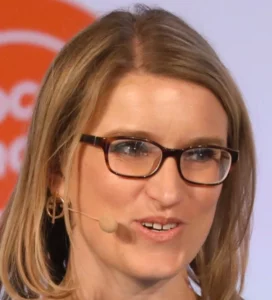
Cannabis marketers are stuck between a rock and a hard place.
They need to drive immediate sales while building the foundational brand equity that will set up the brand for success over the long term.
Some believe that brands don’t matter yet in marijuana, while others are expecting consumer packaged goods-level results.
Marketers today have an arsenal of tactics at their disposal to help build their brand and drive sales:
- They run advertisements, sponsor events or even engage celebrities to drive top-of-the-funnel awareness.
- They develop clever brand positioning targeting strategic consumer segments.
- They redesign their packaging to stand out from the crowd.
- They establish in-store campaigns to win over budtenders or entice new customers.
- They can create loyalty programs to encourage repeat purchases.
All of these initiatives cost money.
Yet, most marijuana marketers have no way of objectively reading which initiatives are actually working.
Know the why
The majority are armed only with point-of-sale data that will tell them which of their products sold, but not why they sold, to whom and if those consumers will buy again.
Was it your new packaging that drove the bump in sales? Or was it your billboard campaigns?
Is your positioning resonating with your target customer?
Do you even know who your current customers are and who you are missing?
The question then becomes not only how much of your marketing budget are you wasting but also how much opportunity cost are you incurring by not maximizing your brand’s potential?
Brand health
This is where brand-health tracking comes into play.
Brand health is a toolkit that tells marketers objectively how well their initiatives are performing, not just in terms of sales but also what is resonating with consumers.
It gauges consumer awareness, consideration, purchase and loyalty of each brand in a competitive set to give brands a clear read on how they rank versus the competition.
Brand-health tracking provides clear key performance indicators for marketing and allows you to track the performance of your tactics over time.
No large CPG brand would even consider deploying billion-dollar marketing budgets without having a toolkit to gauge exactly which marketing dollars are driving return on investment and which are wasted.
In the early days of cannabis, the bigger companies raised billions of dollars and burned through it without carefully watching the impact of the spend.
We know now that much of that money was wasted.
First-mover advantage might have seemed imperative at the time, but it doesn’t mean anything if consumers don’t care about your brand and will just as easily jump over you to the next.
Canadian brands
To illustrate the issue at hand, let’s examine what happened to some of the premium flower brands in Canada over the past year.
According to our research, most premium flower brands in the market had a moment of success in late 2021/early 2022, but many started to struggle with their brand health as early as the second quarter of 2022.
The majority have yet to recover.
What we saw was an influx of new premium flower brands hitting the market in force during 2022, creating more competition for premium shelf space and consumer attention than was seen in previous years.
Some of those new brands have gained attention from consumers earning them more of what we call “share of shelf,” or the percentage of overall retail “shelf” space occupied by a given brand.
Those brands that lost share of shelf in the past year are the ones who ultimately lost brand-health awareness and purchasing.
Focus on what’s working
What we learned is that early success in product sales is not an indicator of a brand’s staying power, especially in an overcrowded market.
Had they gained an early understanding of what matters most in a brand to their consumers, they might have been able to keep some of that awareness and first-mover advantage.
In today’s market, marijuana companies are in an even more challenging situation – capital is difficult to come by, so, naturally, marketing budgets are getting tighter.
At the same time, as cannabis continues its slow evolution into a CPG industry, marketers in the space are beginning to recognize that brands do in fact matter.
This year is shaping up to be one of widespread consolidation and shakeouts for the marijuana industry.
That means less focus on grand experimentation and land grabs and more focus on optimizing what is proven to work.
More than backward-looking sales trends, understanding brand health – or, in other words, the brand attributes that keep your customers wanting more – will be the key factor in who survives and who doesn’t in 2023.
Bethany Gomez is the managing director of Chicago-based cannabis analytics firm Brightfield Group. She can be reached at bethanygomez@brightfieldgroup.com.
To be considered for publication as a guest columnist, please submit your request here.





